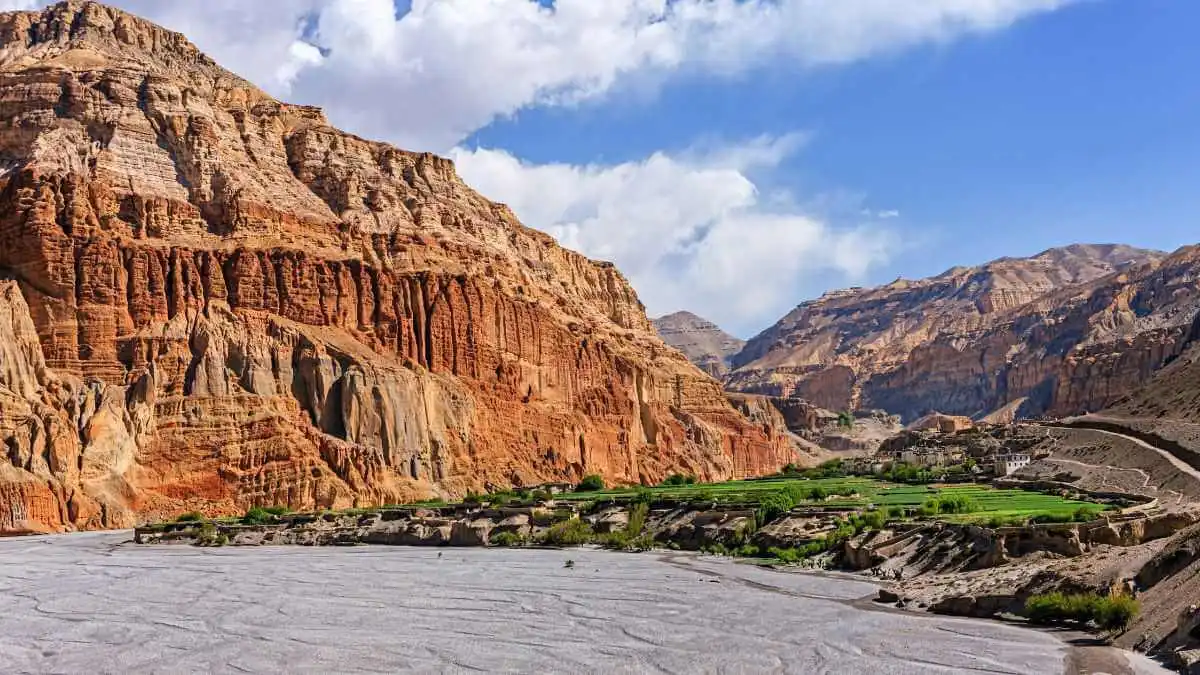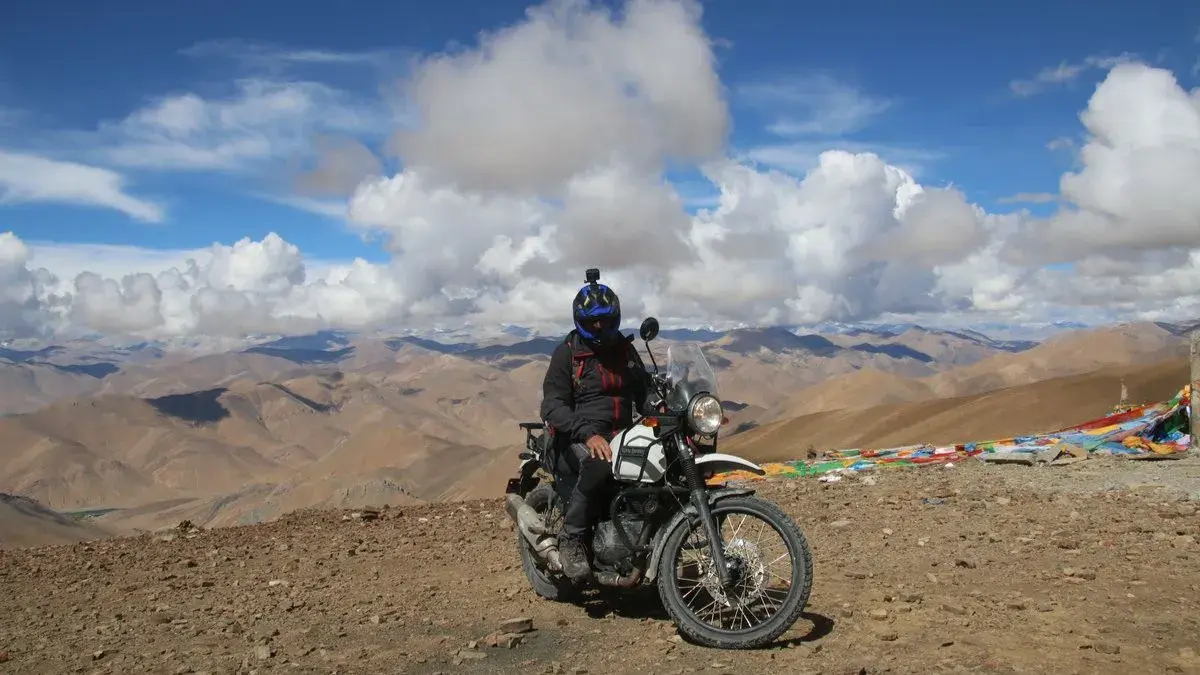Wonders of The Mustang Region
Explore our curated trips, showcasing the best of the The Mustang Region
Mysteries of Mustang Region
Mustang: The Kingdom Beyond the Mountains

Upper Mustang Trek
Discover stunning landscapes and rich culture on an unforgettable trek.

Upper Mustang Motorbike Trip
Experience thrilling rides through rugged terrains and breathtaking views.

Upper Mustang Helicopter Tour
Soar above majestic landscapes for a unique perspective of Upper Mustang.
About The Mustang Region
Mustang, that's where Nepal starts looking a bit like the sky. Up north of the Annapurnas, past that rain shadow and way beyond all the usual green hills, you find this landscape. It feels pretty otherworldly. The Kali Gandaki River slices right through it all, kind of like a thin thread of light. It flows between these canyons made of ochre and copper and ash colors, and that river, it's older than the Himalayas even.
Up at about 3,800 meters, the air gets really thin. Silence hangs heavy there, too. The wind keeps blowing all the time. It shapes the cliffs into these ripply patterns and little caves. Villages hang on in this high desert spot. Places like Kagbeni, Ghami, Tsarang, and Lo Manthang. Each one's just a bunch of whitewashed walls clustered together. Wooden beams stick out. Prayer flags flap around in the wind.
Mustang comes off harsh. But it's graceful in a way. Nothing grows easily there, it seems like. Still, what does grow, from barley fields to people's beliefs, has deep roots. Light shifts the earth's colors hour by hour. Mornings bring pale gold tones. Afternoons go coppery. Dusk hits, and everything turns to violet dust.
The Annapurna Conservation Area
Mustang sits in the Annapurna Conservation Area too, just like Manang. But it really feels different. The dry air and that high Tibetan kind of plateau make it stand out from those green valleys down south. The area covers this high desert stuff, with cliffs full of old caves, and some spots of alpine grass where herders still wander around following the seasons.
ACAP keeps things going without making a big fuss. It protects the ecology that's hanging on, from snow leopards to those plants people use for medicine. And it helps the folks who've been living there for ages. In Mustang, conservation means keeping things steady, not shutting people out. Traditional ways and all the trekking tourists can mix. Without messing up the balance in this tricky place.
Best Seasons to Visit the Mustang Region
Spring (Mar-May): The desert blooms in subtle ways, tiny alpine flowers, soft winds, and clear trails. This is also the festival season in Lo Manthang.
Summer (Jun-Aug): While most of Nepal is drenched in monsoon, Mustang stays mostly dry, protected by the Himalayas’ shadow. Days are long, landscapes luminous.
Autumn (Sep-Nov): Crisp air, golden fields, and long visibility. Ideal for trekking and photography.
Winter (Dec-Feb): Quiet, snow-dusted, and remote. Only the lower villages remain open, and the silence deepens.
Each season reveals a different face of Mustang: spring for celebration, autumn for clarity, winter for solitude.
Culture and People of Mustang Region
Mustang’s culture is Tibetan at its core, preserved through geography and spirit. The people, called Lobas, trace their lineage to ancient kingdoms and monasteries that predate much of modern Nepal. People still hold onto their language, Loba. Their whole way of life stays connected to the ups and downs of that high desert. You can feel it in everything they do.
The capital city, Lo Manthang, keeps the old stories from the Kingdom of Lo alive. That place had its own king right up until 2008. Locals talk about him now with this soft kind of pride. His name was Jigme Dorje Palbar Bista. He stood for keeping things steady, even as the world sped up around them.
Daily life centers on religion, farming, and sticking together as a group. Every spring, they put on the Tiji Festival in Lo Manthang. It lasts three days. Dancers wear masks. They tell stories through it all. The whole thing acts out good fighting evil. This happens right by those old stone walls.
Walking around Mustang shows you time works in loops here.
Nature and Wildlife in the Mustang Region
The dry high altitude desert in Mustang looks pretty barren at first glance. But it's got this quiet life going on. You see hardy junipers hanging in there. Seabuckthorn shrubs, too. They make it so that hardly anything else survives. Cliffs around the place give shelter to Himalayan griffons. Lammergeiers show up. Even those snow leopards slip across the ridges like ghosts, you know.
Kali Gandaki Valley cuts deep right into the earth. It's a real geological thing to see. Ammonite fossils turn up along the riverbeds. Black spiral stones, they call shaligrams. People worship them as sacred bits for Vishnu. Those stones hit you with the idea that this whole land sat under the sea once.
Mustang's landscape has all these elements. Fossils and wind and that empty stretch. Each one feels packed with some kind of old memory.
Final Word
Mustang kind of feels more like this mindset thing than some spot you just head to. It's like that spot in between the ground and the sky where stuff just eases up a bit. The wind turns into words almost. Mountains start feeling like old memories you carry around.
People who show up here talk about it later in these quiet voices. Like they are scared the valley will pick up on it. The thing is, what you get from Mustang is not pictures or tales to tell. It's more about this change in how fast things go. In how you see stuff. In that quiet part of it all.
You head out, and the wind sticks with you for a little while.
